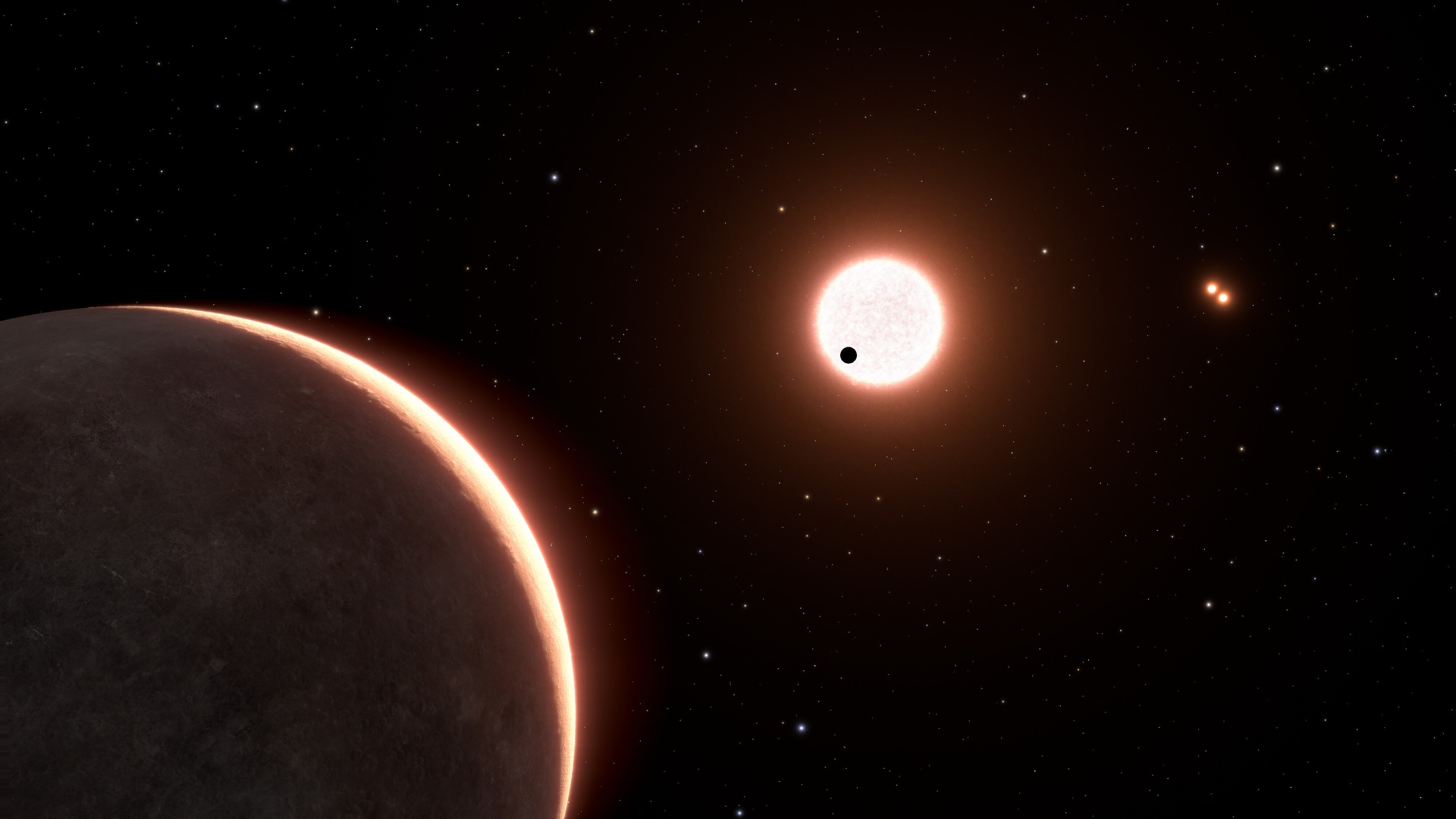Hubble measures size of nearest Earth-sized planet beyond our solar system

Using the NASA/ESA Hubble Space Telescope, scientists have measured the size of the nearest Earth-sized exoplanet (planet beyond our solar system). The exoplanet, LTT 1445Ac, has a surface temperature of roughly 500 degrees Fahrenheit and is located 22 light-years away from Earth in the constellation Eridanus.
Discovered by NASA's Transiting Exoplanet Survey Satellite (TESS) in 2022, LTT 1445Ac passes across the face of a red dwarf star, LTT 1445A, an alignment called a transit, which opens the door to follow-on studies to analyse the type of atmosphere, if any, the rocky world might have.
Hubble's observations reveal that LTT 1445Ac transits the star's full disk, rather than just skimming it, which allowed astronomers to make an accurate measurement of its size
With a true size of only 1.07 times Earth's diameter, the planet is likely a rocky world, similar to Earth, with approximately the same surface gravity. But at a surface temperature of roughly 500 degrees Fahrenheit, it is too hot to harbour life.
"There was a chance that this system has an unlucky geometry and if that's the case, we wouldn't measure the right size. But with Hubble's capabilities we nailed its diameter," said Emily Pass of the Center for Astrophysics | Harvard & Smithsonian in Cambridge, Massachusetts.
LTT 1445A has two other reported planets larger than LTT 1445Ac. The star is part of a triple system of three red dwarf stars - named LTT 1445B and LTT 1445C. Their alignment and the edge-on orbit of the BC pair suggest that everything in the system is co-planar, including the known planets.
Hubble’s observations of its passage across the face of its star showed that it transits the full disk, rather than just skimming it. This allowed astronomers to make an accurate measurement of its size 🛰️📏.Artist's impression: NASA, ESA, E. Wheatley (STScI) pic.twitter.com/gCSVPjfN3w
— HUBBLE (@HUBBLE_space) November 16, 2023










